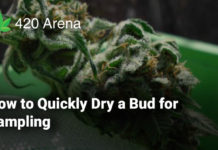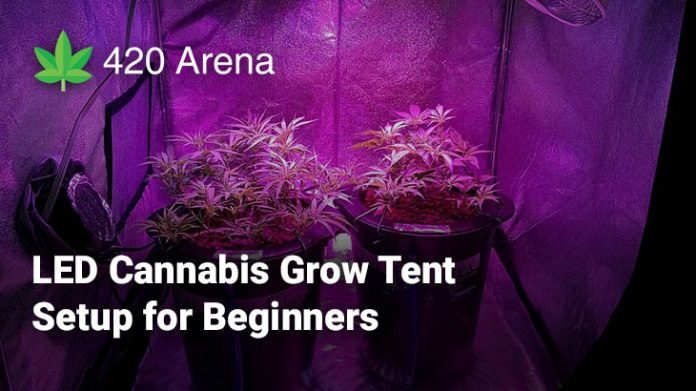A lot of growers have taken to growing Cannabis, or as it is popularly known – weed or marijuana of late. This decade has been one which has witnessed a massive pro-legalization drive all over the world and especially in the US. A number of US states have actually gone pretty liberal on their outlook towards weed and have relaxed weed related laws. Medicinal use of marijuana has been legalized across various places states and even recreational use is now legal in some parts of the country. This is a global trend and is happening across the planet!
Growers, over the years, have begun growing large amounts of marijuana and new growers continue to come up almost every day. One very important thing that new growers need to know about is how to set up a proper grow tent. Over the course of this article, we take a closer look at what a grow tent is, what goes inside it – and most importantly, how to set up a grow tent?
Without further ado, let us take a detailed look at everything that you need to know about a grow tent and how to set it up!
Growing Cannabis Indoors vs Growing Cannabis Outdoors
Before we get into the specifics of grow tents, one basic thing that you must know about growing marijuana is that there are broadly two ways to do it. You can either grow your weed indoors or you can choose to grow it outdoors. In either case, the basic elements required to grow weed remain the same – light, air, water and heat. Remember these four as we will keep coming back to these basic elements time and again over the course of this article.
When you grow your cannabis outdoors, you are basically leaving it on the mercy of the nature. If there’s enough sunlight your plants will get sufficient light and heat. If it rains just the right amount your plants will get the right amount of water. However, if you choose to grow your weed indoors, you get to control all these factors. You can provide artificial sources of light, heat, water and ventilation which basically ensure that your plants grow under ideal conditions.
Considering that you have a much greater control over the factors that influence the growth of your plant while growing your weed indoors, it is the most preferred method of growing marijuana by the growers. When you grow your weed indoors, you don’t just grow it anywhere. You either choose to do it in a grow room (if you are growing lots and lots of weed) or you choose to do it in a grow tent (if you are growing small to moderate amount of weed).
What is a Grow Tent: Importance of Grow Tents
A grow tent is basically a small, enclosed setup inside which you can grow your marijuana. It is basically a small cabinet which has space to keep your weed plants, along with rods which allow you to hang stuff on to it. There are also vents in a grow tent so that air can pass in and out of it. A grow tent is of great use to growers because of multiple reasons:
- First off, using a grow tent keeps things discreet. You might be growing weed in a room inside your house but you still probably don’t want it all out there in the open. Especially because growing weed means there will be a lot of smell, and secondly there might be spillage of water or dirt that can fall out from the plants. Using a grow tent fixes all those problems.
- Another major importance of using a grow tent to grow weed is that it maximizes your resources. Grow lights, in particular, can be used to their maximum efficiency inside a grow tent, thanks to the reflective layers inside it. Since there is only one source of light inside a grow tent and the reflective layer ensures that the light keeps bouncing inside the tent, it is utilized to its maximum possible effect.
- Grow tents are also important because they ensure that all the heat and humidity remains inside one area and the plants get the maximum possible benefit out of it.
Elements Inside a Grow Tent
When you look at the insides of a grow tent, you will find various things:
- First off, there will be the metal rods that support the tent. They form the basic skeleton structure around which the entire tent is set up. The rods can also be used to hang things on to them. The best grow tents have these rods painted in white which ensure that the light bounces off them and does not get absorbed in them.
- Then there is the tent in itself. The exterior of the tent is built with thick fabric, 600D oxford cloth being one of the most popular ones these days. This ensures that all the light inside the tent remains inside the tent and does not leak out. The zippers of the best grow tents are also thick and heavy-duty.
- Talking of the tent itself, the inside of the grow tent is lined with a reflective layer, usually Mylar. This ensures that all the light inside the grow tent is concentrated on to the plant as it keeps bouncing in. Furthermore, thanks to the thick exterior, the light does not even leak out.
- Then on the bottom of it all, there’s usually space for a removable tray, which ensures that all the water that might have spilled or the dirt or leaves that might have fallen through do not dirty your tent but are instead falling on a detachable object which can be removed, cleaned and placed back.
- Most good grow tents also have an observation window via which users can observe what’s going on inside the tent without disturbing the growth cycle or opening the tent.
- Grow lights are another major component that are found inside a grow tent, as they allow for the single source of light inside the tent. Grow lights are very important and based on the phase of growth cycle that your plant is in, the grow lights also need to be competent and helpful in growth of the plant. Full Spectrum LED Grow Lights are usually the preferred choice among growers these days.
- Grow tents usually have multiple vents in them, in one of which you can attach an inline duct fan which will ensure that the air circulates properly. There are some with mesh windows on the bottom of some grow tents as well that ensure proper circulation of air. Many inline duct fans also come with carbon filters which can trap all the odor from the weed ensuring no smell leaks out, causing suspicion.
- Some larger grow tents even have space for humidifiers, dehumidifiers, and heaters which ensure that the plants get just the perfect levels of humidity and heat which are essential for their healthy growth.
How to Set up a Grow Tent? Grow Tent Setup for Beginners (Tutorial)
Now that you know everything about grow tents, what they are, what the benefits of using a grow tent are – and what elements go inside it, you should now know how to set up a grow tent as well. Here are some steps that you need to follow in order to set up just the perfect grow tent for your marijuana growing needs:
-
Step 1: Preparing a Blueprint and Knowing Your Plant
The most basic step is to know which plant you are going to grow, and how many of these plants you are going to grow. This is important because the size of your grow tent depends upon the size of your plants. If your plants grow to a higher height, you might need a taller grow tent. But if your plants are going to be rather small, you can do with a smaller grow tent. Moreover, based on the need of the various stages of the growth cycle of your plant, you might require a different type of light or heating equipment. Hence, it is critical for your to know your plant really well.
You then need to prepare a blueprint of sorts – comparing the area in your room to the area that the grow tent will occupy. For those wondering how to set up a grow tent, this is the very first and basic step. You need to know your plant, and you also need to know exactly where you will be setting up your grow tent.
-
Step 2: Choosing the Grow Tent
The very next step for you now would be to choose a grow tent. You need to buy a grow tent which has a reflective inside but a thick exterior that ensures that light does not leak out of it. You also need to make sure that your grow tent is big enough to accommodate all your plants but not so big that there’s lots of excess space around your plants. The grow tent also needs to be durable and strong enough so that it can survive the basic wear and tear. Furthermore, you also need to ensure that the rods on which the tent will be set up are strong enough to carry the weight of your grow lights and other things that you might be hanging up on them.
Furthermore, always check if there’s a detachable tray on the bottom, which is very important when it comes to cleaning. Having an observation window on your grow tent is also quite helpful. In addition to that, you might also want to check out the number of vents and air-holes there are in your tent. Last but not the least, the zipper’s strength should also be checked because a lot of users end up damaging the zipper very frequently!
-
Step 3: Choosing the Grow Light
Remember we talked about how you need to know the growth cycle of your plant? That is important in choosing a grow light. If you are an old-school grower you might want to use a combination of different lights such as High Pressure Sodium Lights and Metal Halides for different phases of your plant’s growth cycle. However, modern-day growers choose to use LED grow lights which come with a full-spectrum offering. There’s a switch on these grow lights which allows you to switch between bloom and vegetation mode with ease.
You also need to know how high the grow light needs to be from your plants and the size of your grow tents will also depend upon that. The grow light needs to be durable and emit just the right amount of heat. Remember that grow lights are the most important elements of any grow tent because they are the primary source of light (and even heat in some cases). Hence, for those wondering how to set up a grow tent in just the right manner, ensure that you get the right grow light.
-
Step 4: Choosing the Grow Tent Fans
The grow tent fans also have an important role to play when it comes to growing your marijuana. Your fans are an essential part of the tent’s setup because they do two things – they dissipate excess heat and humidity, while also providing fresh air and pushing out the stale air. One important thing that you might want to look along with a grow tent fan is that – is there a carbon filter that comes along with it?
Many inline duct fans feature a carbon filter, whose basic job is to trap all the odor that comes from the grow tent. Considering weed has a very strong and very recognizable odor, you might just want to have a carbon filter along with your grow tent fan so that no smell leaks out.
-
Step 5: Choosing the Grow Tent Humidifiers/Dehumidifiers/Heaters
Finally, if you are growing on a bigger setup, you might also want to make use of humidifiers, dehumidifiers, and even heaters. While most small-scale growers consider them to be ‘luxury’, those who grow large quantities of weed know how important humidity is to their weed! Humidity ensures that the water content is taken in directly via the leaves and less water goes via the roots. Reversing this process is essential when you want a boost of nutrients as they go through the roots. Humidity levels are increased during the vegetative stage and decreased during the bloom phase so that more nutrients can go through. In order to create these ideal conditions, some growers prefer buying humidifiers, dehumidifiers and heaters.
-
Step 6: Assembling it all together
The last step is putting it all together. Now that you have procured all the basic necessities that are required to set up a grow tent for growing cannabis, just assemble it all together and begin using your grow tent to grow that sweet, sweet bud!
Conclusion
We hope that by the time you have finished reading this article, you have understood everything that is required to set up a grow tent and all the components that go inside it. While how to set up a grow tent might seem like a daunting and challenging task at first, but when you come to actually set up your grow tent, it is not that difficult as it seems at first! If you go through each element bit by bit and ensure that you are going for the best of things, the end result in the form of the grow tent that you are setting up is going to be perfect!
Happy Growing! 🙂
Table of Contents



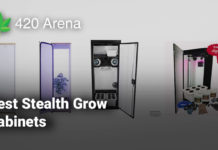
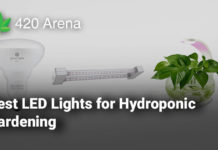




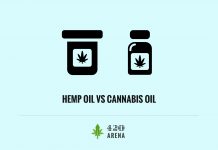



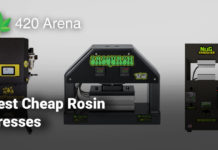

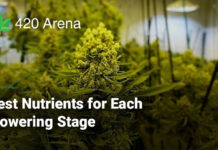
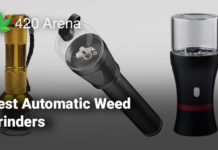
![How to Use Carbon Filters in Your Grow Room [7 Best Carbon Filters for Grow Rooms in 2021] How to Use Carbon Filters in Your Grow Room](https://420arena.com/wp-content/uploads/2020/12/How-to-Use-Carbon-Filters-in-Your-Grow-Room-218x150.jpg)
